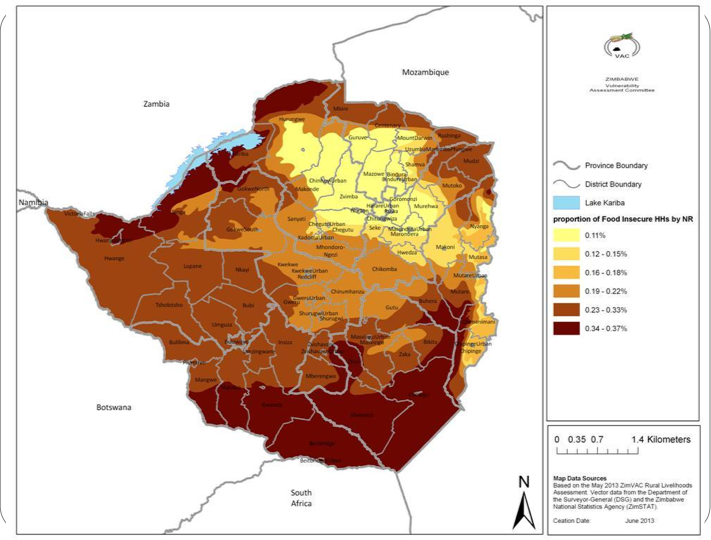Stakeholder views on adaptation
Stakeholders believe that through diversification and market incentives farmers can step up from currently extremely low production to substantially higher volumes for food and sale and also increase the value per unit cropland, also under climate change.
It is clearly understood that multiple factors, including high spatial and temporal variability of rainfall, poor water resources, poor soils, limited access to inputs and markets, all contribute to the extremely low crop yields. In addition, human - wildlife conflicts, for instance elephant attacks and quelea bird invasions, devastate crops.
read more >>
Livestock
In areas like Nkayi there is need for planning strategies for livestock adaptation to the drier climate at various scales, by local extension and leadership and higher level policy and decision makers.
read more >>Windows of opportunities as identified by stakeholders
- Identify profitable crops, livestock, income generation, and low risk technologies that support production to markets;
- Inform about real market potential in resource poor areas, e.g. legumes and livestock. Private agents would invest and develop their own markets, if the conditions were conducive;
- Strategize extension approaches to set more land under production and enhance production per unit land, towards developing climate smart food production systems, engage in input and output markets along crop and livestock value chains;
- Improving the farming context (e.g. agricultural policies, markets) will allow farmers and other stakeholders implement and benefit more from climate change adaptation strategies.

Fig. 2. In Nkayi, as in more than half the country more than a third of households are food insecure during peak times of vulnerability. Source (ZimVAC, 2014).
